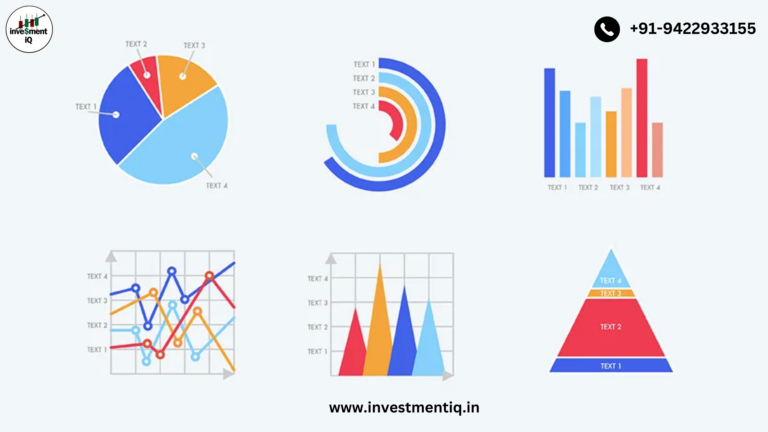First of all, congrats! One of the most dependable ways to gradually increase your wealth is by investing. We are here to assist new investors in getting started. Now is the time to turn your finances into your advantage.
You must have a fundamental understanding of how to invest your money before you put it into the stock market or other investments. Unfortunately, there isn’t a single solution that works for everyone.
The strategy that works best for you is the greatest approach to invest your money. You should think about your risk tolerance, budget, and investing style while determining that.
How to invest money
- Identify your investing style.
- Determine your budget for investing.
- Assess your risk tolerance.
- Decide what to invest your money in.
1. Your style
How much time do you want to put into investing your money?
When it comes to investing, there are two main schools of thought: active investment and passive investing. As long as you have long-term goals and aren’t only interested in short-term rewards, both can be excellent strategies to increase your wealth. However, you may have a preference for one type due on your hobbies, risk tolerance, lifestyle, and financial situation.
Active investing
Active investing entails building and managing your portfolio independently as well as spending time researching your investments. To put it simply, you intend to be an active investor if you intend to purchase and sell individual stocks via an online broker. Three factors are necessary for you to be a successful active investor:
- Time: Active investing requires lots of homework. You’ll need to research stocks. You’ll also need to perform some basic investment analysis and keep up with your investments after you buy them.
- Knowledge: All the time in the world won’t help if you don’t know how to analyze investments and properly research stocks. You should at least be familiar with some of the basics of analyzing stocks before you invest in them.
- Desire: Many people simply don’t want to spend hours on their investments. And since passive investments have historically produced strong returns, there’s absolutely nothing wrong with this approach. As Warren Buffett said regarding passive investing, “It isn’t necessary to do extraordinary things to get extraordinary results.” Active investing certainly has the potential for superior returns, but you have to want to spend the time to get it right.
It’s also important to understand what we don’t mean by active investing. Active investing doesn’t mean buying and selling stocks frequently, it doesn’t mean day trading, and it doesn’t mean buying stocks you think will go up over the next few weeks or months.
Passive investing
On the other hand, passive investing is the equivalent of an airplane on autopilot. You’ll still get good results over the long run and with far less effort.
Putting your money to work in investment vehicles where someone else handles the laborious tasks is the essence of passive investing.Investing in mutual funds is an illustration of this tactic. Another option is to employ a mixed strategy. For instance, you can use a robo-advisor or employ a financial or investment advisor to create and carry out an investment plan for you.
Passive investing
More simplicity, more stability, more predictability
- Hands-off approach.
- Moderate returns.
- Tax advantages.
Active investing
More work, more risk, more potential reward
- You do the investing yourself (or through a portfolio manager).
- Lots of research.
- Potential for huge, life-changing returns.
2. Your budget
How much money do you have to invest?
You may think you need a large sum of money to start a portfolio, but you can begin investing with $100. We also have great ideas for investing $1,000.
Here’s the point. The amount of money you’re starting with isn’t the most important thing. The big question is whether you’re financially ready to invest and to invest frequently over time.
One important step to take before investing is to establish an emergency fund. This is cash set aside in a form, such as a savings account, that makes it available for quick withdrawal.
Most investments, whether stocks, mutual funds, or real estate, have some level of risk. You never want to be forced to divest (or sell) these investments in a time of need. The emergency fund is your safety net to avoid this.
Divest
Divesting means getting rid of or reducing your position in an asset. Divestiture can occur at the individual or corporate level.
Most financial planners suggest an ideal amount for an emergency fund is enough to cover six months’ expenses. Although this is certainly a good target, you don’t need this much set aside before you can start investing. The point is you just want to avoid having to sell your investments every time you get a flat tire or have some other unforeseen expenses pop up.
It’s also smart to get rid of any high-interest debt (like credit cards) before starting to invest. Think of it this way: The stock market has historically produced returns of 9% to 10% annually over long periods, depending on the exact timeframe you’re looking at. If you invest your money at these types of returns and pay your creditors 25% interest (the average credit card interest rate in late 2024), you’ll put yourself in a position to lose money over the long run, even if your investments perform well.
Where to invest $1,000 right now
When our analyst team has a stock tip, it can pay to listen. After all, Stock Advisor’s total average return is 884% — a market-crushing outperformance compared to 171% for the S&P 500.
They just revealed what they believe are the 10 best stocks for investors to buy right now…
3. Your risk tolerance
How much financial risk are you willing to take?
Not all investments are successful. Each type of investment has its own level of risk, but this risk is often correlated with returns.
It’s important to find a balance between maximizing the returns on your money and finding a comfortable risk level. For example, high-quality bonds, such as Treasury bonds, offer predictable returns with very low risk but also yield relatively low returns of between 4% and 5% (as of late 2024), depending on the maturity term you choose and the current interest rate environment.
By contrast, stock returns can vary widely depending on the company and time frame. However, the overall stock market has historically produced average returns of almost 10% per year.
There can be huge differences in risk even within the broad categories of stocks and bonds. For example, a Treasury bond or AAA-rated corporate bond is are very low-risk investment. However, these will likely pay relatively low interest rates. Savings accounts represent an even lower risk but offer a lower reward.
Interest Rate
An interest rate is the cost of borrowing money or the premium you get for lending money. Learn how interest rates affect the economy.
On the other hand, a high-yield bond can produce greater income but will come with a greater risk of default. In the world of stocks, the spectrum of risk between blue chip stocks, like Apple (AAPL 0.7%), and penny stocks is enormous.
One good solution for beginners is to use a robo-advisor to formulate an investment plan that meets your risk tolerance and financial goals. In a nutshell, a robo-advisor is a service offered by a brokerage. It will construct and maintain a portfolio of stock and bond-based index funds designed to maximize your return potential while keeping your risk level appropriate for your needs.
4. What should you invest your money in?
How do you decide where to invest your money?
This is a tough question; unfortunately, there isn’t a perfect answer. The best type of investment for you depends on your investment goals. But with the guidelines discussed above in mind, you should be far better positioned to decide what to invest in.
For example, if you have a relatively high risk tolerance, along with the time and desire to research individual stocks (and to learn how to do it right), that could be the best way to go. If you have a low risk tolerance but want higher returns than you’d get from a savings account, bond investments (or bond funds) might be more appropriate.
If you’re like most Americans and don’t want to spend hours on your portfolio, putting your money in passive investments, like index funds or mutual funds, can be a smart choice. And if you really want to take a hands-off approach, a robo-advisor could be right for you.
Related investing topics
How to Invest in Stocks: A Beginner’s Guide for Getting Started
Are you ready to jump into the stock market? We’ve got you.
How to Invest in Index Funds
Index funds track a particular index and can be a good way to invest. Get a fast introduction to index funds here.
What to Do With Extra Money
So what do you do to build wealth if you find yourself with extra cash?
How to Make Money With AI

While many are worried that AI might eventually take their jobs, others are looking to harness its power to make money.
The bottom line on investing
Investing money may seem intimidating, especially if you’ve never done it before. However, if you figure out how you want to invest, how much money you should invest, and your risk tolerance, you’ll be well positioned to make smart decisions with your money that will serve you well for decades to come.
Don’t miss this second chance at a potentially lucrative opportunity
Ever feel like you missed the boat in buying the most successful stocks? Then you’ll want to hear this.
On rare occasions, our expert team of analysts issues a “Double Down” stock recommendation for companies that they think are about to pop. If you’re worried you’ve already missed your chance to invest, now is the best time to buy before it’s too late. And the numbers speak for themselves:
- Amazon: if you invested $1,000 when we doubled down in 2010, you’d have $24,836!*
- Apple: if you invested $1,000 when we doubled down in 2008, you’d have $46,976!*
- Netflix: if you invested $1,000 when we doubled down in 2004, you’d have $479,727!*
Right now, we’re issuing “Double Down” alerts for three incredible companies, and there may not be another chance like this anytime soon.
you may be interested in ths blog here:-
What’s the difference between Treasury bonds, notes, and bills
Can I Open a Brokerage Account for My Child
What is the Contrast Between Favored Stock and Normal Stock?




